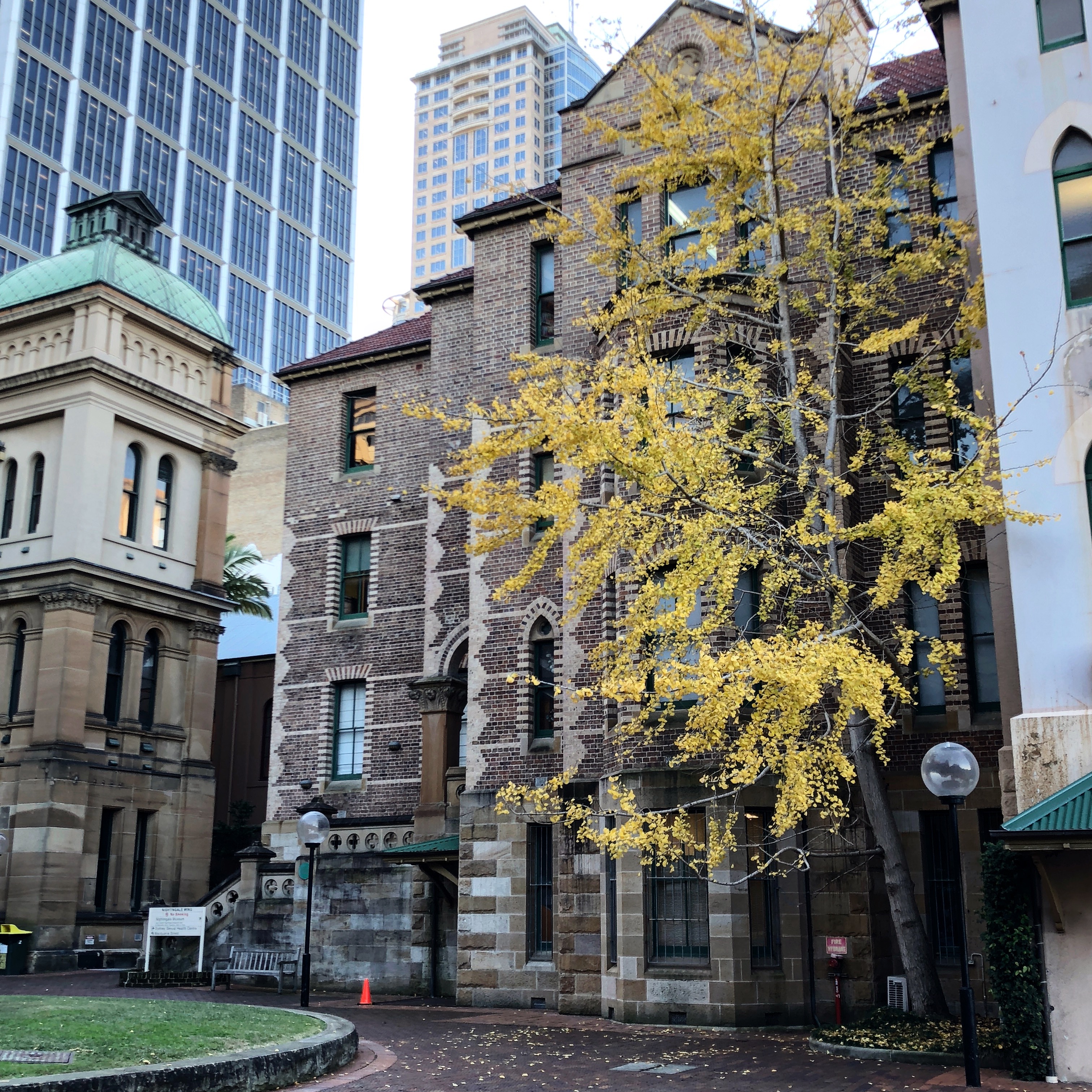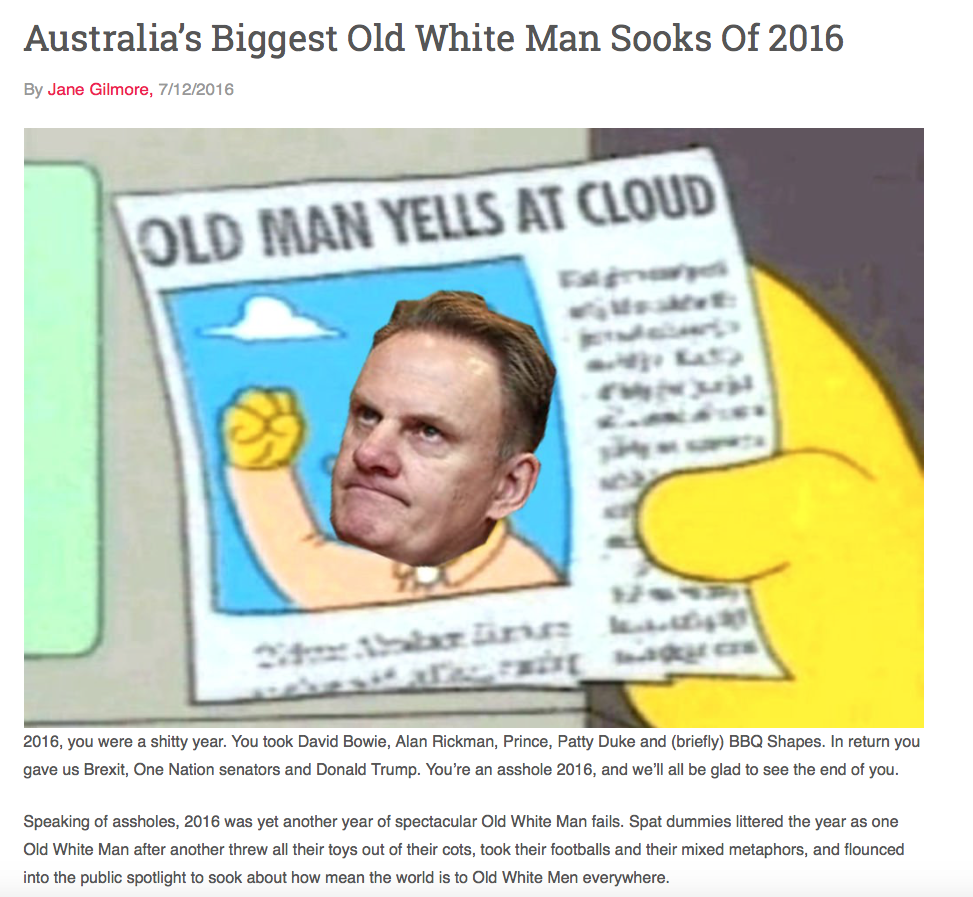Homemade | Delicious | Slightly toxic

Fresh from the lab. Order today!
*If you have any questions about this product, please put them in the comments section below.
The political and pragmatic dimensions of intoxication for queer cultures

{draft chapter, co-authored with Kiran Pienaar, Dean Murphy and Toby Lea, for the forthcoming Routledge Handbook of Intoxicants and Intoxication}
Could intoxication be understood as a politically significant activity among sexual and gender minorities? The question is likely to meet with some resistance. But approaching intoxication as an activity that grapples with the political organization of society is not the same as recommending it as a promising strategy. We usually think of intoxication as a state of the individual body, or else a set of social or cultural or psychologically driven practices that put bodies into such a state. Since the conventional aim of these practices is to alter, manage or change the self in the world (Partanen 1981), the self emerges as the most pertinent locus of action and this produces the practice as personal in nature, relevance and consequence. To frame intoxication as a political tactic is to refuse this personalizing effect by situating it historically and exploring the kind of practical response to certain problem-situations it might embody. The question becomes, ‘how has intoxication emerged as a practical strategy that enables certain, more or less effective, navigations of social norms around sexuality and gender?’, remembering those norms are part of the political ordering of society.
The higher rates of drug and alcohol use found among LGBTQ people is mainly attributed to ‘minority stress’ by the researchers concerned (Goldback et al. 2014, Dentato et al. 2013, Lehavot & Simoni 2011). Intoxication emerges as a form of self-medication here: a way of coping with the negative affects produced by lived experiences and expectations of stigma, discrimination and victimisation. This focus has been criticized for ‘overlooking the meaningful ways in which … consumption intersects with identity, sociability, place, space and community formation for queer youth’ (Hunt et al. 2019, p.382). Indeed, when the hypothesis of minority stress fails to line up statistically significant correlations, some studies concede that gay socializing ‘often occurs in bars, where alcohol is served and other drugs may be available’ (Rosario et al, 2004, p. 1630), usually before recommending alternative, drug-free social spaces for minority individuals. Alcohol and other drug (AOD) use is typically approached within this literature as a problem in and of itself, that is symptomatic in turn of another social problem (‘minority stress’). Little wonder there are calls for greater attention to meanings, contexts and experiences of pleasure from a growing cohort of researchers in the fields of critical drug and sexuality studies (Pienaar et al. 2020a, Holt and Treloar 2008, Race 2009, Dennis and Farrugia 2017, Paasonen 2018).
Without wishing to deny the realities these different approaches configure, the binary choice they create between the competing figures of problematic self-medication and untroubled social or recreational consumption is hardly satisfying. It is not simply that recreational intoxication can lead to problems or that self-medication can bring pleasure; we are left wondering about the relevance of intoxication within the practical situations commonly confronted by those stigmatised on the basis of their sexual orientation and/or gender expression. Minority stress is conventionally defined as exposure to victimisation and discrimination, expectations of rejection and hostility, internalisation of negative attitudes about homosexuality, and concerns about disclosure of identity (Meyer, 2003). There is nothing very sexy about this definition, it must be said. If the injuries of social minoritisation were enough to explain disproportionate substance use within a particular population, one might expect it to hold true for other stigmatised minority groups that routinely suffer from discrimination and victimisation (ethnic and racial minorities, for example) but this is not borne out by the research evidence in any consistent way (Shih et al. 2010, Gillmore et al. 1990). In the ‘minority stress’ account of LGBTQ substance use, moreover, the individual is produced as the primary locus of injury: stigma becomes a condition of the self. The identities of sexual and gender minorities are ontologised, with intoxication produced as a means of palliating the injuries these damaged identities have incurred. But for Goffman (1963) stigma is embedded in relational dynamics; it creates problem-situations that social actors variously navigate. What if intoxication were transposed from its current makeshift status as a plaster for the wound of sexual stigmatization and reconfigured as a pragmatic means of carrying out certain discredited activities?
In this chapter we aim to develop such a pragmatic, performative account of the meanings, uses and effects of intoxication among gays, lesbians, bisexuals, transfolk and other assorted queers. Rather than intoxication standing as a toxic means of palliating damaged, static identities, we approach it as a practical – even creative – strategy that, for all its risks and toxicities, can enable individuals and groups to circumnavigate and disrupt prevailing gender and sexual norms. We do not deny that stigma, discrimination, social exclusion and sexual normalization act as structuring constraints within the life-worlds and practical repertoires of LGBTQ+ groups and individuals: rather our aim is to switch gears and translocate accounts of LGBTQ+ substance use away from the ontological register of pathological self-medication and towards the more performative and pragmatic key of tactical responsiveness to the sociomaterial situations that stigma, discrimination, and normalisation create or make manifest. We seek a more dynamic account of queer intoxication, in other words, that turns attention towards the practical question of what intoxication does for those who subject themselves with it. Intoxication is what some people do to allow certain things to happen – not simply a confirmation of injured being. As Judith Butler has maintained, gender and sexuality should not be mistaken for stable identities or inner truths. Rather we might attend to ‘the mundane way in which bodily gestures, movements, and enactments of various kinds constitute the illusion of an abiding gendered self’ (Butler 1988, p. 519). In this chapter we seek to engage this performative register of self-practices. For certain social subjects, certain bodily movements and enactments such as drinking, getting high, getting out of it or getting wasted, matter. But how, and why should this be the case?
 Drawing on my experience of living with HIV for over two decades, this essay discusses the forms of anxiety and concern that emerged in 1996 in the context of the introduction of HIV combination antiretroviral therapy around the use of so-called ‘drug cocktails’. It shows how these concerns reflect broader anxieties about increasing sexual activity between men at this time. This event happens to kickstart a corresponding problematisation of gay men’s use of recreational drugs– another sort of ‘drug cocktail’ – on the same basis. I see the present moral panic over chemsex as the latest instalment of this discourse. The piece demonstrates the analogous character of antiretroviral therapy and recreational substance use in gay men’s practice, arguing that pleasure, self-medication, and experimentation with the conditions of life are concerns that cut across outdated distinctions between pharmaceutical drugs and illicit drugs. Meanwhile, the stigmatised and criminalised status of HIV-positive sex, gay sexuality and illicit drug use produces paranoid subjects and effectively endangers the health and wellbeing of those affected. It must be countered. Paying attention to the collective experiments of drug users is likely to be much more generative.
Drawing on my experience of living with HIV for over two decades, this essay discusses the forms of anxiety and concern that emerged in 1996 in the context of the introduction of HIV combination antiretroviral therapy around the use of so-called ‘drug cocktails’. It shows how these concerns reflect broader anxieties about increasing sexual activity between men at this time. This event happens to kickstart a corresponding problematisation of gay men’s use of recreational drugs– another sort of ‘drug cocktail’ – on the same basis. I see the present moral panic over chemsex as the latest instalment of this discourse. The piece demonstrates the analogous character of antiretroviral therapy and recreational substance use in gay men’s practice, arguing that pleasure, self-medication, and experimentation with the conditions of life are concerns that cut across outdated distinctions between pharmaceutical drugs and illicit drugs. Meanwhile, the stigmatised and criminalised status of HIV-positive sex, gay sexuality and illicit drug use produces paranoid subjects and effectively endangers the health and wellbeing of those affected. It must be countered. Paying attention to the collective experiments of drug users is likely to be much more generative.

I wrote this piece for a forthcoming collection called Long Term, edited by Scott Herring and Lee Wallace, who invited me to write something about living with HIV.
Filed under Affect, Antiretrovirals, Books, Devices and technology, Digital culture, Engagement with medicine, Erogenous zones, Eroticism and fantasy, HIV behavioural surveillance, Masculinities, Medicine and science, Parties, Policy and programs, Random thoughts, Self-medication, Sexual practice, Sexual Sociability, Theory
Some queen told me that a selfie I took reminded them of Frank Thring. I had no idea who that was so I got busy googling and learnt, to my delight, he was a flamboyant Australian actor born in the 1920s who, among his many gay achievements, invented the clapperboard, did stage to great acclaim in London, and in his film career played Pontius Pilate in Ben Hur (1959), a gangster in The Man from Hong Kong (1975), The Collector in Mad Max: Beyond Thunderdome (1985) and voiced the part of Zeus in Hercules Returns (1993). So far so good.
But I struck inter-web gold when I came across this 1976 commercial he starred in for Martins Cigarettes which may well be one of the gayest things I’ve ever seen:
“This is a commercial, as you may have guessed,” he announces, following a nonplussed eye roll, “and this…” – he gestures dismissively to the bedazzled chorus line – “was the advertising agency’s idea”.
“Totally unnecessary!” he exclaims.
‘I am simply here to tell you about Martin’s, the new King Sized cigarette,’ he explains, and proceeds to do the job he was paid for and spruce the product.
‘Martin’s in the handsome gold packet has a quality,’ he recites, ‘a quality you can trust!’ before a glamorous blonde dancing partner decked in gold is thrust upon him, prompting an exasperated cry, ‘Must we dance??’
The whole production is delivered in such a withering, caustic tone as Thring goes through the motions of advertising Martins cigarettes, all the while serving up generous lashings of fey manner, camp asides and persistent ennui at the genre he is compelled to work within.
But the queer epiphany occurs in the final moments of the ad, when Thring incants what could be taken to be an aspirational lifestyle fantasy slogan, but into which he sneakily smuggles a sighing meta-commentary on the market genre he’s just participated in:
It’s easy to read this little gem of a phrase as a wry parody on consumer culture; lines that echo Adorno’s claim that consumers see right through the promises of the commodity-process, but go on to buy things anyway, producing an affective climate of cynicism.
But what delights me most is the distance and critical reflexivity his camp manner engenders in relation to the commodity itself, literal investment in which was conceived by Frankfurt Scholars as a perpetual re-creation of frustration in terms remarkably reminiscent of addiction.
The things one does! The things one believes in! The slogan works on at least two registers: a literal celebration of the glamour of doing and believing in things, and believing what one is doing when one is doing the consumption thing… and a parodic performance that ridicules the thing that one is doing, and the beliefs one must entertain when one does the things one does when one does the commodity-thing.
In our hygienic, smoke-free days, the retro-activity of almost any cigarette advertisement might come across as camp in the extreme, but I like to think Thring’s irony sets in motion a novel conceptual feeling. In playing the signifier so gaily and so drolly he multiplies possible manners of relating to the fetishized commodity-form, the object of compulsion and source of possible addiction.
We need not enslave ourselves to the tyranny of literal meaning: we can play with meaning and signification; and in such play we conjure a modicum of agency. We are not merely slaves to the order-word (the original Latin meaning of addiction).
A very cultural studies thought-chain, if ever there was one.
Those who are cynical about of the critical possibilities of creative consumption, symbolic re-appropration and camp pleasure will object that whatever critical distance camp irony creates has become so fashionable that any critical purchase it might once have had has been lost. Indeed, hip irony and detachment only serve to congratulate the consumer for their cynicism, but in the end works just as well to sell things, all the while palliating whatever anxiety the commodification provokes. Thring might even be acknowledging this: “The things we believe in!” he exclaims triumphantly, depressively.
But I think Thring’s performance undercuts direct investments in the addictive object in a more generous way, sparking the possibility of new forms of eventful reflexivity, multiplying possible relations to the fetishized thing.
Indeed, he Thrings it!
In the end, Thring’s ironic, gay, destabilising performance may work just as well to sell the fetishised commodity, but in thringing it, he produces it expansively, not as a fixed and determined thing, but as a problematic object, which is to say, an object available to the pleasure of problematisation.
Dance, we must : )
But in semiotic play we trust.
Filed under Affect, Devices and technology, Eroticism and fantasy, Self-medication
In Mad Travellers (1998), Ian Hacking argued that each historical age produces its own types of madness or mental illness. What happens when a hegemonic social identity – in this case, white and heteromasculinist – starts to lose its presumptive grip on national space and understand itself as an aggrieved and embattled minority?[1]
In the wake of Trump’s election, digital snippets began to emerge that captured white people ‘losing their shit’ in the course of a range of mundane consumer transactions. Losing their shit is a polite way of putting it: those encountering these clips on social media became spectators to a series of highly public, abusive outbursts, precipitated by frustrated feelings of entitlement to special treatment:
In each of these incidents, subjects emboldened by the Trump win fly into highly public scenes of vitriol, rage and abuse at the drop of a hat. Trump and Brexit-style rhetoric has carefully mapped out sites of external blame for whatever it is these white folks are suffering: racial and sexual minorities, immigrants, liberal elites, independent women and transgender individuals are typical scapegoats.
The documented spikes in racist, homophobic and transphobic violence that occurred after Brexit and the US election can be read as further manifestations of a syndrome or structure of feeling ‘triggered by’ these official endorsements of populist ethno-nationalist sentiment. These violent acts, committed in bids to reassert failing sovereignty, remind us that the idealised nation is not only racialized (white), but also has a sexuality (heteronormative) that is felt to be constitutively endangered.
What I find particularly interesting about these acts of aggression and violence is their adoption of the prism of identity politics to vent out their claims on cultural supremacy and special treatment. These people feel they have been discriminated against: that, were it not for radical intervention, the liberal state would further conspire to reduce their recourse to the terms of abuse that once kept minorities and women in their place and thus served to ensure their own social status and dominance so effectively.[2]
In 1997 Lauren Berlant observed, “today many formerly iconic citizens who used to feel undefensive and unfettered feel truly exposed and vulnerable …They sense that they now have identities, when it used to be just other people who had them.”[3] What has happened in the interim, and what few could have predicted, is how enthusiastically these self-same subjects have embraced the terms of identity politics to understand their own plight and vituperatively restore their hold on cultural privilege.
In Australia, there has been no shortage of privileged white men prepared to line up to whine at length, publicly and pathetically, about their intolerable sense of of having been victimised.  The federal government actively panders to these sentiments, withdrawing funding from anti-bullying programs offering sex and gender diversity education in schools, and more recently, announcing a parliamentary inquiry into whether provisions that make it unlawful to publicly “offend, insult, humiliate or intimidate” others on the basis of race impose “unreasonable restrictions on freedom of speech”. (Won’t someone please unfetter the poor privileged white darlings?).
The federal government actively panders to these sentiments, withdrawing funding from anti-bullying programs offering sex and gender diversity education in schools, and more recently, announcing a parliamentary inquiry into whether provisions that make it unlawful to publicly “offend, insult, humiliate or intimidate” others on the basis of race impose “unreasonable restrictions on freedom of speech”. (Won’t someone please unfetter the poor privileged white darlings?).
 Image: Cartoonist Cathy Wilcox’s critique of Australian PM Malcolm Turnbull’s intention to stall a vote on marriage equality by requiring a public plebiscite, and de-fund the Safe Schools program, February 2016.
Image: Cartoonist Cathy Wilcox’s critique of Australian PM Malcolm Turnbull’s intention to stall a vote on marriage equality by requiring a public plebiscite, and de-fund the Safe Schools program, February 2016.
The ebullient outbursts I’ve described above are steeped in vindictive and vengeful ressentiment that seeks out sites of external blame upon which to avenge hurt and redistribute their pain.[4] It is very tempting to diagnose these psychotic outbursts as symptoms of a new pathology: Trumpitis? Brexophilia? Post-Trump Manic Spectrum Disorder? After all, anger and violence generated by delusions of grandeur and delusions of persecution are regarded as textbook signs of paranoid schizophrenia.
Pathologising people isn’t my usual style – I’ve spent most of my life contesting the imposition of therapeutic morality – but part of me says, why not? If these folks truly want to qualify as minority identities, bring it on! After all, would LGBT, feminists, and people of colour really qualify as minority identities in the absence of their historical subjection to intensive pathologization, criminalisation, surveillance and brutal treatment? If you’re really a subordinated identity, show me the evidence!
The problem with psychologisation is that it dehistoricizes affective complications, extracting these feelings of the world from any broader sociopolitical, historical trajectories. It’s also patronising, and therefore likely to compound the problem: In 1997, when a ‘highbrow’ journalist asked Australia’s far right politician Pauline Hanson if she was xenophobic, Hanson’s blinking response, “please explain?” resonated with many older, white non-tertiary educated Australians, powerfully embodying a spreading sense of alienation from the structures of liberal power.[5]

One of the most subtle and provocative arguments of Wendy Brown’s (1995) States of Injury – perhaps the least popular among liberal critics – is that the disciplinary genres of US identity politics personalise and naturalise some of the complex injuries of capitalism. In taking the white heterosexual middle class as the standard against which social injury is measured, the North American habit of staging politics through identity makes categories of identity “bear all the weight of … sufferings produced by capitalism.”[6] I find this insight particularly useful in terms of getting a grip on the present conjuncture, where the capitalist dream is failing to deliver on its promise even for much of the white middle class. In this instance, the siphoning of socioeconomic and cultural frustrations into a racialised category of wounded identity has generated particularly abusive, vindictive and (dare I say) psychotic manifestations.
What I think would be most helpful now is a more affirmative understanding of identity and difference, a reformulation of the possibilities of identity that equips us for dealing with our multi-ethnic, multi-gendered times – and even take some pleasure in them. (I’m struck, for example, by the factoid that recently came to light that Trump supporters ‘are disproportionately living in racially and culturally isolated zip codes and commuting zones’ and have limited interaction with other social groups. The point speaks to the critical relevance of contact theory, whose vision of social safety is elaborated most imaginatively and queerly by African American Sci-Fi writer Samuel Delany.[7])
Imagine if identity was conceived, not as a category of victimhood or failed sovereignty requiring the protection and reparative intervention of a (presumptively white and heterosexual) state, but a source of multiplicity and difference – a contact zone – that is valued and affirmed for the occasions it opens up for mutual transformation? Whose promise consists precisely in the unpredictable and exciting possibilities that emerge from inter-class/identity encounters for what nations and worlds and states might become ?[8]
With this more affirmative approach to identity and difference, perhaps we will get a more active, constructive handle on what might become of the present phase of consumer capitalism and globalisation. But of course this will require white heterosexual subjects to renounce their claims on sovereignty and special treatment, and address their present manifestation as retaliatory violence against unknown others – as a matter of urgency.
References
[1] In the Australian context of state multiculturalism, Ghassan Hage theorises this situation as one in which a white majority starts to worry it is losing its grip on the managerial relation it has enjoyed over national space, which it feels is its birth-right. See Hage, White nation: Fantasies of white supremacy in a multicultural society. Routledge, 2012.
[2] For a wonderfully pedagogical and accessible explication of this point see Meaghan Morris, ‘Sticks and Stones and Stereotypes’ http://www.australianhumanitiesreview.org/archive/Issue-June-1997/morris.html
[3] Lauren Berlant, The Queen of America goes to Washington City: Essays on sex and citizenship. Duke University Press, 1997, p. 2.
[4] On ressentiment, see Friedrich Nietzsche, On the genealogy of morals and ecce homo. Vintage, 2010.
[5] For a brilliant discussion of this moment to which this argument is indebted see Meaghan Morris (2000), “‘Please explain?’ignorance, poverty and the past.” Inter-Asia Cultural Studies 1,2: 219-232.
[6] Wendy Brown, States of injury: Power and freedom in late modernity. Princeton University Press, 1995, p. 60. For another brilliant excavation of the trials, tribulations and terms of US identity politics see Cindy Patton, “Tremble, hetero swine!” in Warner (ed.) Fear of a queer planet: Queer politics and social theory, 1993, pp.143-177.
[7] Rylan Lizza, “What we learned about Trump’s supporters this week”, New Yorker, August 13, 2016. For a queer vision of social safety that draws brilliantly on contact theory see Samuel Delany (1999), Times Square Red, Times Square Blue.
[8] For a more detailed elaboration of the theoretical coordinates of this approach, and an attempt to put it into practice, see my forthcoming book, The Gay Science: Intimate Experiments with the Problem of HIV, under contract with Routledge.
Filed under Affect, Masculinities, Medicine and science, Random thoughts, Self-medication
Has anyone seen the recent biopic J.Edgar? It’s the story of J. Edgar Hoover, who was head of the FBI between 1935 and 1972 and who was also a rumoured homosexual. At one point early on in the film, the young J. Edgar is depicted taking his soon-to be assistant, Helen Gandy, on a date to see the card catalogue system he claimed to have invented for the Library of Congress. (Gee, some date!) In a bid to show off the ingenuity and efficiency of the system, he asks Gandy to propose any topic for him to search within the archives. “Indiscretion!” she proposes, and in a matter of minutes, J. Edgar finds a book on the topic and retrieves it from the library shelves. He then goes on the rhapsodise about how wonderful it would be if there were a card on every individual in the United States: how easy it would be to solve crimes if every individual were as easily identifiable as books in the library.
The film sets up an interesting set of tensions and associations between information retrieval, the catalogue, surveillance, indiscretion and homosexual expressivity. The ‘theory’ of the film is that it is J. Edgar’s own inability to express his sexuality that leads to his obsessive interest in the private lives of others. (This licences the film to go on obsessively to explore the private life of J.Edgar. Not a happy thing, unless you like tales of repressed old gay men played by straight actors in bad ‘old person’ makeup….)
For me, this representation of the card catalogue connects in interesting ways to another historical figure who I’ve been researching, Sam Steward – a fascinating figure, and contemporary of J. Edgar Hoover’s, whose life is the topic of this recent brilliant biography by Justin Spring. Steward was a literature professor, who became a tattoo artist and also a writer of erotic fiction. He was friends with a range of prominent 20th c. figures, from Gertrude Stein to Alfred Kinsey. He was also a bit of a gay lothario and lover of rough trade.
One of the best known features of Steward’s life was his keeping of The Stud File, a 746 cross-referenced card catalogue system in which he recorded details of every sexual partner he had between 1924 through 1974 – their measurements, attributes, what they did together, etc. Steward used the catalogue system partly in order to refresh his memory and enable repeat encounters, partly as an upshot of his relentless enthusiasm for archiving.
This makes me think about the use of this device as part of male homosexual arrangements and erotic practice over the 20th century. The catalogue emerges as a distinctive mechanism or what I would call an infrastructure of sexual encounter. I’ve become fascinated with the place of the catalogue in the emergent homosexual subjectivity of the 20th c. Just as fascinating, I think, is the desire to enumerate; and the place of the statistical imagination in homosexual self-understanding more generally (I’ll blog about this some more another time).
Steward went on to become one the key informants of Alfred Kinsey, whose work is considered foundational for American sexology. I’m struck by the sense in which Steward’s practice of cataloguing anticipates and informs the scientific methods of this nascent discipline. For me the link to Kinsey connects in suggestive ways to the practices of HIV behavioural and epidemiological surveillance, which draw extensively on the techniques of sexology, and which have become the primary means of knowing about male-to-male sexual practice – a massive worldwide apparatus, intensively resourced and linked into policy, without which contemporary policy responses to HIV/AIDS would be unthinkable.
There’s a lot that can be said about this particular structure of scientific knowledge and the forms of authority it auspices (and I’ve begun to try to say some of it here and here): the sense in which the primary way in which we ‘know’ about sexual practice is by counting and measuring other people’s behaviour. I’m constantly struck, for example, by the fact that we have so many people working in the HIV field who are regular participants in affected communities/cultures, but who are blocked if not actively discouraged (by the professional frames within which they work) from reflecting in any sort of sustained or explicit way on the making of their experience …as part of their work . You have to ask: what sort of engagement with sexual practice are these epistemological arrangements modelling?
But I am also interested in the sense in which Steward’s practice of cataloguing anticipates or presages another contemporary device or formal infrastructure which now plays a major part in the facilitation of all-male sexual encounters: the online hookup site; and in particular, the online profile …which can be viewed as an active participant in the contemporary shaping of gay sexual subjectivities. Through the online profile, we catalogue ourselves – according to certain formats – and we use this device to facilitate sexual encounters, having it operate as the terms of our initial exposure to others. Could the popular participation (not to mention forms of disaffection and critical engagement) that surround this infrastructure be more widely or critically generative?
The difference of course between J. Edgar and Sam Steward, or between behavioural surveillance and online cruising, is that in the latter instance what we have – at least potentially – is a case of inhabiting the catalogue: i.e. an explicit use of the catalogue for embodied and erotic purposes.
And so what I am becoming interested in is the politics that emerges when we acknowledge (or get explicit about) our inhabitation of the catalogue: When we reformulate or engage the catalogue as a device that is affective, erotic and specifically inhabited …